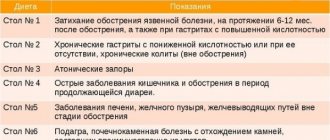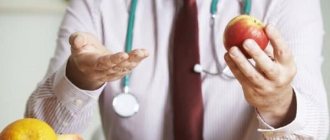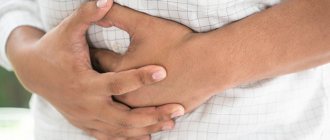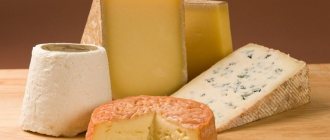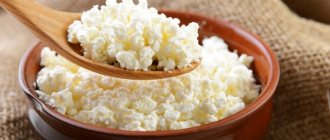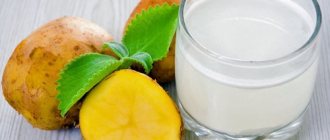Pancreatitis (inflammation of the pancreas) is a severe debilitating disease that occurs in acute and chronic forms. Therapeutic measures are not complete without a dietary approach to the patient’s nutrition, compliance with the basic rules of cooking and eating.
General requirements are included in the recommendations for the use of table No. 5 for pancreatitis, compiled in accordance with the classification of M.I. Pevzner for patients with damage to the liver, biliary tract (hepatitis, cholecystitis, dyskinesia), pancreas, containing modifications for postoperative treatment. However, the course of the disease has its own characteristics, their relevance must be taken into account when drawing up an individual 5p diet menu (for pancreatitis) for a week.
Goals of nutritional therapy
No matter what wonderful solutions are administered intravenously to a patient with pancreatic pathology, they cannot replace the nutrients supplied by food products; they are always used for a very limited time. An acute inflammatory process in the pancreas requires its maximum removal from the digestive process to normalize functions.
This is achieved through complete fasting and a ban on drinking for 1–2 days. The attending physician performs a special procedure for suctioning the contents of the duodenum and stomach with a probe so that no secretions irritate the gland. As a result of fasting, it is possible to block the excessive synthesis of enzymes and the process of self-destruction of the organ parenchyma.
Subsequent nutrition should:
- normalize secretory activity;
- ensure intensive bile secretion in case of gallbladder dysfunction;
- influence the liver to activate fat metabolism and glycogen accumulation;
- provide the optimal amount of protein, vitamins and microelements to support the production of energy necessary for recovery;
- delay the development of fibrous tissue (important for chronic pancreatitis);
- stimulate general and local immunity.
Swelling of the parenchyma during inflammation disrupts the lobular structure of the pancreas
Allowed Ingredients
When following diet number 5, during an inflammatory process in the pancreas, it is very important not only to prepare dishes correctly, but also to select the ingredients correctly.
Allowed products for pancreatitis
Diet 5 for pancreatitis involves the use of:
- yesterday's or dried bread;
- biscuits and biscuits without additives;
- lean varieties of meat, poultry and fish;
- first courses based on vegetarian broths or milk. In the first case, you need to avoid frying, and in the second, you need to avoid adding large amounts of sugar and butter;
- water- or milk-based porridge. Particular attention should be paid to buckwheat, semolina, oatmeal and rice. To enhance the taste, you can add homemade jam, honey, dried fruits and a little sugar;
- pasta;
- milk and fruit sauces. It is worth noting that it is best to avoid sifting the flour necessary to thicken the sauce;
- vegetables both raw and after undergoing heat treatment. Preference should be given to potatoes and zucchini, pumpkin and asparagus, cauliflower, beets and carrots;
- egg yolks, steamed white omelet and soft-boiled eggs;
- meat and cottage cheese casseroles;
- steam soufflés, fish and meat meatballs or cutlets;
- vegetable and fruit salads;
- dairy products with low or zero fat content;
- seafood;
- nuts and greens;
- fruits and berries of sweet varieties;
- compotes and jelly;
- freshly squeezed vegetable and fruit juices. At high concentrations, they can be diluted with purified water without gas. When consuming such drinks, it is worth remembering that they should be drunk immediately after preparation; if the juice sits for more than ten minutes, then it is better to discard it;
- marmalade and marshmallows;
- jellies and puddings;
- low-fat hard cheese;
- weak black, green and herbal tea. If your doctor allows, you can add a slice of lemon to such drinks;
- cocoa with milk.
Before you start eating according to a diet for acute pancreatitis of the pancreas or exacerbation of chronic pancreatitis, you must adhere to therapeutic fasting. Often this measure lasts no more than three days, during which you can drink still water and green tea without sugar. This need is to give the affected organ a break.
The main principles that Diet 5 requires for pancreatitis
To restore pancreatic function it is necessary:
What can you eat when your pancreas hurts?
- exclude foods that stimulate the secretion of pancreatic juice (fatty meat and fish products, boiled and fresh cabbage, mushrooms);
- change the ratio of nutrients by increasing the amount of protein consumed (lean meat, fish, cottage cheese) to 150 g per day, reducing fat to 70–80 g, limiting carbohydrates to 300–350 g (especially easily digestible types of sugars, honey);
- strictly follow the cooking rules;
- control the volume of a single feeding, avoid one-time overeating, the weight of each dish should not exceed 150 g;
- follow a regimen of fractional meals up to six times a day (every three hours);
- Any changes should be agreed with the doctor based on the results of control studies.
Option 5p has more stringent restrictions.
Principles of nutrition
The diet for chronic cholecystitis is a regular nutritious diet with 5-6 meals throughout the day. It is important to remember that portions must be small. This diet promotes optimal bile production - in the right amount and at the right time.
For pancreatitis, gastritis and cholecystitis, you will have to adhere to other nutritional rules:
- the menu should not be the same;
- you should not eat if you are not hungry;
- the process of eating should be accompanied by a good mood, otherwise it is less digestible;
- dishes are served only warm - this way they will not cause spasms of the biliary tract;
- you need to eat something every 2.5–3 hours;
- Only fresh products are used for cooking; reheated foods are strictly prohibited;
- a product containing veins or coarse fiber must either be crushed or ground well. First of all, this rule applies to meat;
- The menu can include baked food, as well as food cooked in a steam or multicooker. You will have to give up fried vegetables.
The patient should draw up an approximate nutritional schedule, which must be followed constantly - both at home and at work.
To quickly restore the functions of the gallbladder and liver, the doctor must prescribe hepatoprotectors.
What cooking features does Diet 5 recommend?
Dietary rules for pancreatitis prohibit fried and smoked foods and prepared foods. You should not feed the patient pickled and salted vegetables, canned food (including juices). Since fats are sharply limited, a spoonful of butter is placed directly on the plate. It is allowed to use boiling, baking, stewing, and steam cooking of food products.
It is prohibited to use cooking oil, margarine, or lard in the cooking process.
Vegetables cannot be sautéed in a frying pan; they are finely chopped or ground, or boiled. Salt intake is limited to 10 g per day (normal 12–15 g). At home, it is better to measure out 2 teaspoons and place a salt shaker on the table to add salt from this amount throughout the day, and do not use salt during the cooking process.
The use of hot seasonings (pepper, mustard, horseradish), ketchup, mayonnaise, and dressing sauces is prohibited. They are replaced with vegetable oils in limited quantities. You can eat dishes only warm; hot and cold temperatures are strictly contraindicated, as they are a strong irritant to the digestive system. Diet 5p for pancreatitis, unlike table No. 5, should consist of dishes with a liquid consistency. All products are pre-twisted or wiped.
Features of preparing dishes at table No. 5p
Dishes in diet No. 5p should have a high content of pectin, liquid, lipotropic components and dietary fiber. During the treatment period, a split meal regimen is introduced, patients take food 5-6 times a day. Products are steamed, baked or boiled. When preparing dishes, vegetables are not sautéed. Products rich in fiber are pureed, the rest are finely chopped.
The diet limits the consumption of fats and carbohydrates. The main diet consists of protein products. Dishes with oxalic acid, containing a lot of cholesterol, coarse fiber and containing purines are excluded from the menu. Remove foods that contain a lot of essential oils and fried foods. Salt should be consumed no more than 10 g per day, and water - up to two liters.
Food should be taken warm. Cold and hot foods are contraindicated.
Indications for diet 5p
Diet No. 5p is recommended for a two-week period after a period of fasting for acute pancreatitis and the next exacerbation of chronic pancreatitis. It should ensure a gradual “exit” of digestive functions from the “non-working” mode and restoration of organs for transfer to a full table No. 5.
During the transition period, maximum sparing of the pancreas, stomach, and intestines continues, and reflex stimulation of the production of digestive juices and bile is prevented.
Temporary use of diet No. 5p is justified when pain increases due to chronic pancreatitis
What is included in the daily composition of the 5p diet?
With all the restrictions, the composition of the daily menu must provide sufficient calories, vitamins, and a high content of pectins and lipotropic substances. The average energy content of the diet corresponds to 1700–2500 kcal.
Carbohydrates are maximally reduced in the first days to 50 g (gradually increase to the physiological norm, but sugar remains no more than 30 g), fats up to 70 g (butter about 30 g per day, vegetable oil no more than 15 ml per dish), proteins are the predominant component on the menu (100 g). The composition varies depending on the duration and severity of the acute stage of pancreatitis.
Mandatory vitamin-salt food components:
- retinol and thiamine 10 mg;
- ascorbic acid 150 mg;
- riboflavin 2 mg;
- nicotinic acid 1.6 mg;
- phosphorus 1.3 g;
- sodium 3 g;
- magnesium 0.5 g;
- iron 0.03 g,
- calcium 0.8 g.
All useful components correspond to a certain content of the product, so it is important to try to combine and use different permitted combinations. They provide not only taste, but also consistency of therapeutic effects.
Authorized Products
The first days, after the fasting regime, the patient is allowed only vegetable soups with cereals, slightly sweetened berry jelly, steamed omelet, and rosehip decoction. Every 2-3 days the diet expands. Lean meat and fish are used to prepare not broths, but steamed pureed meatballs.
Porridges are prepared first in water, then semi-liquid in diluted milk from oatmeal, buckwheat, rice, and semolina. Wheat bread is allowed only dried (yesterday's bread), small crackers, you can eat unsweetened dry biscuits (biscuits). Once a day - a soft-boiled egg or in the form of a steam omelet.
Vegetables are added to soups, boiled and ground. By the end of the week, milk soups, boiled vermicelli, stewed or baked apples without skin, and grated low-fat cottage cheese are introduced. It is better to prepare jelly and juices without sugar from fruits and berries. Concentrated freshly squeezed juice is diluted in half with boiled water.
Allowed are weak tea with lemon without sugar, rosehip decoction
Menu for pancreatitis of the pancreas (diet 5)
Here is an approximate menu for a week for pancreatitis (diet/table 5p). Naturally, you can swap breakfasts or lunches on different days, adhering to the general principle. All dishes are prepared according to the rules, using a minimum amount of spices.
| Monday | Tuesday | Wednesday | Thursday | Friday | Saturday | Sunday | |
| Breakfast | Milk soup with noodles | Steam omelette | Oatmeal with butter | Steamed omelette | Buckwheat with milk | Semolina porridge with butter, sugar | Wheat porridge with milk |
| Lunch | Soft-boiled egg, chicory | Baked cheesecakes | 2 tangerines or other fruit | A piece of cottage cheese casserole, jelly | 1 pear or 5-6 apricots | Soft-boiled egg, herbal tea | Kissel, biscuits |
| Dinner | Meatball soup (recipe below), 1 slice day-old bread | Puree potato soup with croutons | Buckwheat soup with vegetables | Chicken breast and potato soup (recipe below) | Vegetable soup, a piece of boiled meat | Vegetable stew, | Boiled fish with buckwheat garnish, vegetable broth |
| Afternoon snack | Yogurt, pear | Kefir, sweet apple | Cottage cheese, a handful of raspberries or other berries | Tea and a piece of cheese, applesauce | Natural yogurt, any fruit | Soft cottage cheese, 2 pcs. prunes or some raisins | Pumpkin puree with apple (recipe below) |
| Dinner | Pilaf with chicken, fresh cucumber | Boiled fish with mashed potatoes | Steam cutlets, buckwheat | Boiled potatoes, stewed chicken, some greens | Zucchini baked with chicken breast | Chicken cutlets, side dish of rice | Macaroni with low fat cheese |
| Second dinner | Fruit jelly | A portion of cottage cheese with dried fruits | Vegetable puree | Apple juice | Sweet berry jelly | Pumpkin juice | Steam cheesecake |
Not recommended products
The 5p diet includes many restrictions. The list includes:
- fresh pastries, rye flour bread;
- sweets and culinary products with cream;
- alcohol in any form, strong tea, coffee, carbonated drinks;
- cold dishes (ice cream), hot tea;
- rich broths from meat and fish;
- smoked sausages, frankfurters, semi-finished products;
- drinks made from sour milk (kefir, yogurt, ayran);
- fish roe;
- radishes, turnips, radishes, spinach and sorrel;
- dishes made from mushrooms and cabbage;
- spicy seasonings;
- pickles and marinades;
- milk and products made from it with high fat content;
- canned fish, meat products, vegetables and juices;
- oranges and tangerines, grape juice;
- fast food products, various chips, nuts, crackers with seasonings.
Diet 5p table: what is possible, what is not (table)
The diet is significantly limited, so use the information from the table to create a menu for the week. In it you will find all the products that are allowed to be consumed during the period of remission of chronic pancreatitis.
| Products | What can you eat | What not to eat |
| Bread and pastries | Yesterday's white bread or white bread crackers (grade 1 and 2 flour). Unsweetened biscuits | Fresh bread. Rye bread. Delicious baked goods. Puff pastry pastries |
| Meat and poultry | Lean meats: beef, veal, rabbit (without fascia, tendons). Low-fat poultry: turkey, skinless chicken | Fatty meats and fish. Canned food. Smoked, salted meat. Sausages |
| Fish | Low-fat varieties: hake, cod, blue whiting, pollock, pollock | Fatty varieties: halibut, herring, mackerel, silver carp. Canned fish. Fried, salted, marinated, smoked fish |
| Milk products | Milk. Fresh low-fat non-acidic cottage cheese. Mild and low-fat cheese. Low-fat sour cream and cream are used in table food 5p only in dishes. Fermented milk drinks are allowed: kefir, fermented baked milk, etc. | Full fat dairy products |
| Cereals | Rice, oatmeal, buckwheat, semolina. Pasta | Barley, millet. Barley, corn grits. Legumes |
| Soups | Vegetarian pureed soups with the addition of permitted vegetables | Meat and fish broths. Soups with mushroom broths. Borsch, cabbage soup. Cold soups (okroshka) are prohibited |
| Eggs | Mostly whites in the form of steamed omelettes from 2 eggs. Half a yolk is allowed | Whole eggs. Fried, hard-boiled eggs |
| Vegetables | Zucchini, pumpkin, cauliflower, beets, potatoes, carrots. All vegetables on the diet must be consumed after heat treatment | White cabbage, onion, garlic, sorrel, radish, radish, turnip, eggplant, mushrooms |
| Fruits | Ripe non-acidic fruits and berries in grated form. Baked apples | Sour, unripe fruits and berries. Bananas, dates, grapes, figs |
| Dessert | Fruit jellies, mousse with sweetener or with a small amount of sugar | Chocolate, jam, ice cream. Confectionery |
| Beverages | Compotes with sweetener or a small amount of sugar. Fruit juices without sugar, diluted half and half with water. Weak tea with milk. Rose hip decoction | Coffee, cocoa. Grape juice. Cold drinks. Alcoholic and carbonated drinks |
How do diet rules depend on the duration of an exacerbation?
The 5p diet is designed to gradually expand the diet depending on the period from the onset of the disease. In the first 3 days after the fasting diet, you are allowed to eat little by little and in small portions up to 6-7 times a day. For the patient, liquid ground porridge with water is prepared. They give half a portion of vegetarian mucous soup without salt, jelly, and rosehip decoction.
Some nutritionists also recommend blackcurrant decoction. You can sweeten the drink slightly. Anything that causes a juice effect (salt, fats, seasonings, cabbage) is strictly prohibited. On the fourth day, calorie content increases to 600–800 kcal. The amount of protein increases to 15 g, carbohydrates - 200 g.
From the fifth day until the end of the week, the calorie content increases and reaches 1000 kcal. Fats are included in the dishes (butter 10 g), proteins are allowed to be increased to 40 g, carbohydrates - up to 250 g. Vegetarian soups are introduced into the menu, porridges are cooked steeper, but without milk, mashed boiled meat, fish balls and meatballs, steamed cutlets.
Vegetable purees from potatoes, carrots, low-fat cottage cheese, and grated apple are allowed. In addition to rosehip decoction, fresh diluted juices and cranberry juice are added to the drink. From the ninth day, the calorie content is 2000 kcal. In the 5p diet menu, the proportion of fats (20 g), proteins (60 g), and carbohydrates (300 g) increases. Single servings are getting larger.
Due to the low calorie content, intravenous infusion of glucose and protein drugs (parenteral nutrition) is continued during nutrition.
Cooking continues without salt. A tablespoon of vegetable oil is added to the plate with the finished dish. After the twentieth day from the onset of the disease, the diet expands significantly. The use of 40 g of fats, 100 g of proteins is allowed, it is possible to bring carbohydrates to the physiological norm (400–450 g). Continue to chop and puree dishes, boil without salt or bake.
The patient is fed: pureed cereal soups, liquid porridges (buckwheat, oatmeal, rice and semolina are not yet recommended), vegetable puree, boiled pumpkin, fruit jelly. Curd pudding is allowed. Milk, various milk porridges, and kefir are gradually introduced into the diet. Boiled meat and fish may be cooked in pieces.
One-day menu for exacerbation
Serious restrictions can be mitigated by alternating cereals, vegetable purees, dairy products, and baked fruits.
- Breakfast - thin oatmeal with diluted milk, rosehip decoction with crackers.
- Second breakfast - lightly sweetened pureed cottage cheese, green tea with milk without sugar.
- Lunch - vegetable puree soup from carrots, potatoes, cauliflower, steamed fish cutlets, berry jelly.
- Afternoon snack - stewed apple, milk with biscuits.
- Dinner - steam omelette of two proteins, kefir.
- During the day you need to drink at least 1.5 liters of liquid.
The nutritionist will write a menu individually for the patient
Sample menu for the week
The menu for pancreatitis and cholecystitis is developed individually, taking into account associated problems. You can use ready-made solutions, but it is advisable to clarify the specifics for each day with a doctor.
Mineral waters of the Essentuki, Borjomi, Nagutskaya brands are useful. Since highly carbonated drinks are prohibited, the bottle must be opened and left overnight to allow the gases to escape. You can drink water in the morning.
Monday:
- Breakfast. Omelet cooked in a double boiler from 1-2 egg whites, or oatmeal. The drink is weak tea. Unsalted cracker.
- Lunch. Cottage cheese seasoned with low-fat sour cream, or baked apple.
- Dinner. Grind soup, steam chicken, make a salad from boiled beets. Wash it down with ripe rosehip compote.
- Afternoon snack. Baked pear.
- Dinner. Shown are spaghetti sprinkled with cheese and fruit compote.
Tuesday:
- Breakfast. Steam omelette and dry cookies, washed down with weak tea.
- Lunch. Baked apple, 100 ml low-fat natural yogurt.
- Dinner. Vegetable soup and steamed fish. Buckwheat is prepared as a side dish. Weak coffee with the addition of low-fat milk / berry jelly.
- Afternoon snack. If there is no diabetes accompanying pancreatitis, eat a banana.
- Dinner. Baked rice, fruit compote.
Wednesday:
- Breakfast. Cheesecakes, chicory infusion with milk.
- Lunch. Kissel and a couple of biscuits.
- Dinner. Carrot soup with rice, steamed cutlets, jelly.
- Afternoon snack. Cracker with jelly.
- Dinner. Vegetable stew, high-quality milk sausages, compote.
Thursday:
- Breakfast. A casserole made from pumpkin with apples or cottage cheese is useful. You can flavor the dish with a small amount of low-fat sour cream. Weak tea.
- Lunch. Galette and oatmeal jelly.
- Dinner. Soup with meatballs and vegetables. Steamed meat, boiled buckwheat / rice. Weak coffee with milk.
- Afternoon snack. Snack on sweet plums. But you are allowed to eat no more than 5 ripe pieces.
- Dinner. You can treat yourself to milk sausages, crushed potatoes and herbal tea.
Friday:
- Breakfast. Macaroni sprinkled with cheese, weak tea.
- Lunch. Cottage cheese seasoned with sour cream or yogurt.
- Dinner. Soup made from pumpkin, seasoned with homemade noodles. Boiled meat, buckwheat. Kissel/dried fruit compote.
- Afternoon snack. A couple of baked apples.
- Dinner. In case of pancreatitis or exacerbation of cholecystitis, end the day with steamed fish and stewed vegetables. Herbal tea shown.
Saturday:
- Breakfast. Protein omelet, drink tea with weak brewing.
- Lunch. They snack on cookies or biscuits and drink jelly.
- Dinner. Homemade noodle soup, stewed carrots and steamed cutlets. Berry jelly is served.
- Afternoon snack. They finish the jelly and eat unsalted crackers.
- Dinner. Boiled rice with dried fruits. Compote is perfect for sweet porridge.
Sunday:
- Breakfast. English berry pudding, light tea.
- Lunch. Yogurt-flavored, baked fruit.
- Dinner. Pamper yourself with pasta with rolled boiled meat, pureed vegetable soup. Drink optional.
- Afternoon snack. Low-fat milk, a couple of cookies.
- Dinner. Mashed potatoes, steamed fish, compote.
Before going to bed, it is recommended to drink half a glass of kefir or liquid yogurt.


